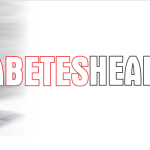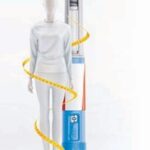Case study
Mrs Priya Shah (name changed) was having trouble seeing clearly. She would see a black spot when she looked out of her right eye. Worried, she went to see an ophthalmologist (eye specialist). The doctor diagnosed that a blood vessel in Mrs Shah’s right eye had burst and blood was flowing at high pressure and hitting the retina
(light-sensitive, inner tissue of the eye). This had slightly damaged the retina causing it to swell and had resulted in the black spot in her vision. The doctor started treating the retinal damage. He also asked her if she had Diabetes or hypertension. Mrs Shah indicated that she did have Diabetes but did not know if she had hypertension. The eye specialist asked her to get her blood sugar and blood pressure checked. Her sugars were slighty on the higher side but her blood pressure was substantially higher – 140/100 mm Hg.
Mrs Shah consulted her diabetologist who adjusted the medication dosage to better manage her blood sugar levels. She was also referred to a cardiologist who prescribed antihypertensive medication to manage the high blood pressure. He also explained Mrs Shah hypertension was responsible for the blood vessel to burst which had caused the retinal damage. The cardiologist referred Mrs Shah to a nutritionist who helped her assess her diet. She was advised to lessen intake of foods containing salt and saturated fat and to increase intake foods containing potassium, calcium and fibre. The nutritionist explained that this would help lower blood pressure significantly.
Mrs Shah was happy that seeking timely medical attention helped saved her vision. She realised that the concentrated and collective efforts of the ophthalmologist, diabetologist, cardiologist and the nutritionist were required to best manage her health.
Why highs and lows matter!
Blood pressure (BP), at times referred to as arterial blood pressure, is the amount of pressure exerted by the flowing blood upon the walls of the arteries. During each heartbeat, the BP varies between a maximum (systolic) and minimum (diastolic) pressure. The normal BP for a healthy person should be around 120/80 mm Hg. The two figures are the readings in millimetres of mercury on the BP device. The first figure is the Systolic Pressure (120) which is measured as our heart contracts and pushes blood through the arteries and the second one is the Diastolic Pressure (80), which is measured when the heart relaxes between beats to refill the blood. Slight variation to these numbers is quite normal, but very high blood pressure (hypertension) poses health risks such as:
. Heart attack
. Heart failure
. Stroke
. Kidney failure
. Circulatory problems caused by narrowed arteries
. Retinal damage (eye damage)
 n
n
What is hypertension?
Hypertension is defined as blood pressure higher than 140 over 90 mm Hg. A diagnosis of hypertension can be made when one or both readings are high. When your blood moves through your vessels with too much force, you have high blood pressure. Your heart has to work harder to circulate blood through the blood vessels when blood pressure is high and your risk for Diabetes-related problems goes up.
Anyone can develop high blood pressure but it gets more common as you age.
Having high blood pressure for a short amount of time during the day is a normal response to daily stressors. However, higher systolic or diastolic readings for longer periods of time require medical attention.
Major studies have investigated how more versus less intense blood pressure treatment affects the heart. These studies along with the SPRINT study published in the Journal of Hypertension sought to understand how ideal blood pressure levels can be achieved by treatment. Data obtained from the previous studies was combined with the SPRINT study findings. This helped researchers clarify the ideal blood pressure targets to manage treatment. These findings observed that consistent blood pressure lowering significantly reduced the risk of stroke, heart related diseases, major heart events and deaths.
In addition, the data pooled from 34 randomised control trials (RCTs) showed that if systolic BP was lowered by 10 mm Hg or diastolic BP was lowered by 5 mm Hg then it significantly reduced heart attack or heart failure. Research has shown that greater intensity of BP lowering results in significant lowering of risk of strokes, deaths caused by heart attacks and heart failures. The data also shows that all major outcomes can be reduced by lowering systolic BP, suggesting that people with lower systolic pressure had a lower level of risk of heart related problems.
 n
n
Diagnosis of Hypertension
It is diagnosed by measuring blood pressure reading serially. Blood pressure can be measured at the clinic or at home. Blood pressure is usually expressed in terms of the systolic pressure over diastolic pressure and is measured in millimetres of mercury (mm Hg), for example, the ideal blood pressure considered is 120/80 mm Hg.
 n
n
Checking your BP
The arterial pressure is most commonly measured via a sphygmomanometer which uses the height of a column of mercury to reflect the circulating pressure. While performing the test, your arm and back should be supported, with your upper arm at heart level, legs crossed and feet on the floor. Your arm should be bare, with your sleeves comfortably rolled up.
Your healthcare provider will wrap the blood pressure cuff snugly around your upper arm.
. The cuff will be inflated quickly, either by pumping the squeeze bulb or pushing a Checking your BP
The arterial pressure is most commonly measured via a sphygmomanometer which uses the height of a column of mercury to reflect the circulating pressure. While performing the test, your arm and back should be supported, with your upper arm at heart level, legs crossed and feet on the floor. Your arm should be bare, with your sleeves comfortably rolled up.
Your healthcare provider will wrap the blood pressure cuff snugly around your upper arm.
. The cuff will be inflated quickly, either by pumping the squeeze bulb or pushing a Checking your BP
The arterial pressure is most commonly measured via a sphygmomanometer which uses the height of a column of mercury to reflect the circulating pressure. While performing the test, your arm and back should be supported, with your upper arm at heart level, legs crossed and feet on the floor. Your arm should be bare, with your sleeves comfortably rolled up.
Your healthcare provider will wrap the blood pressure cuff snugly around your upper arm.
. The cuff will be inflated quickly, either by pumping the squeeze bulb or pushing a button. You will feel tightness around your arm.
Next, the valve of the cuff is opened slightly, allowing the pressure to slowly fall.
. As the pressure falls, the reading when the sound of blood pulsing is first heard is recorded. This is the systolic pressure (is the peak pressure in the arteries, which occurs near the end of the cardiac cycle when the ventricles are contracting).
. As the air continues to be let out, the sound will disappear. The point at which the sound disappears is recorded. This is the diastolic pressure (minimum pressure in the arteries, which occurs near the beginning of the cardiac cycle when the ventricles are filled with blood).
 n
n
Remember: Inflating the cuff too slowly or not high enough may cause a false reading. If you loosen the valve too much, you won’t be able to determine your blood pressure.
24-hr ambulatory BP monitoring
When you check your BP in a hospital, you may not get the most accurate value. Some of us suffer from the ‘white coat effect’ (anxiousness of being in a hospital setting) – so it may be just nervousness causing higher blood pressure when the doctor measures it! That’s where 24-hr ambulatory BP monitoring becomes handy. This method involves measuring your BP over 24 hours while performing daily activities, using a small digital blood pressure machine, which is attached to a belt around your body and connected to a cuff around your upper arm. The machine monitors BP every 15-30 minutes during the day and 30- 60 minutes at night. This test is usually performed in people who suffer from white coat effect or to test effectiveness of BP medications or diagnose hypertension during night time.
Risk factors of hypertension
Age and family history play a part in putting you at risk of hypertension. You cannot help getting older or being genetically vulnerable, but you may be able to control smoking, alcohol intake, obesity, stress and lifestyle – people with sedentary lifestyle are more susceptible. Diabetes is another risk factor and the combination of Diabetes and hypertension is particularly dangerous.
Role of genetics
In many families, high prevalence of hypertension is observed in first degree relatives of hypertension patients. There are a large number of genes that are partly or solely responsible for the onset of hypertension. Family history is known to increase the risk of a diagnosis of hypertension.
Impact of aging on blood pressure
Endothelial (the inner lining of the blood vessel) dysfunction is more common in elderly population. With increasing age, prevalence of hypertension increases which is directly indicated by increased systemic vascular resistance.
Physical inactivity
Sedentary individuals who are not involved in physical activity have 20 to 25 per cent increased risk for developing hypertension. Regular exercise increases peripheral vasodilation and sodium loss, thereby lowering systemic vascular resistance and promoting healthy endothelial.
Tobacco consumption and smoking
Tobacco consumption and smoking releases harmful chemical toxins which are responsible for hypertension as well as stroke and heart disease.
Salt intake
Increased salt intake (more than 8 gm/ day) increases the chances of developing hypertension than those who limit their intake to 3 gm/day.
Diabetes and hypertension
Diabetes and hypertension together increase the risk of atherosclerosis (hardening and narrowing of arteries).
Types of hypertension
.Primary or essential hypertension
.Secondary hypertension
Primary (or essential) hypertension is high blood pressure which does not have a secondary cause. There lacks an identifiable cause of high blood pressure. For 95 per cent of people with high blood pressure, the cause of their hypertension is unknown. This kind of blood pressure tends to develop gradually over many years.
Experts believe that primary hypertension is caused by a variety of factors and many of them are unknown, which is why its management remains highly subjective. For
e.g. – a low sodium diet may help lower BP in some people who have primary hypertension while not in others.
Secondary hypertension is the more commonly seen form of hypertension. It is caused by an abnormality in the arteries supplying blood to the kidneys. The renal disorders associated with hypertension are renal artery stenosis, polycystic kidney disease and chronic kidney disease. It is diagnosed by measuring renal parameters and by imaging.
Other causes include airway obstruction during sleep, diseases and tumours of the adrenal glands, hormone abnormalities, thyroid disease, too much of salt or alcohol intake in the diet and may also be induced by some prescription medication.
How hypertension affects your organs
Heart
Hypertension in long term may lead to left ventricular hypertrophy (the condition in which the muscle wall of heart’s left pumping chamber (ventricle) becomes thickened) which predisposes to heart failure, ventricular arrhythmia and atrial fibrillation. Hypertension is an important risk factor for ischemic heart disease.
Large Vessel Disease
Hypertension also contributes as a major risk factor for aortic dissection (a tear in the aorta that causes blood to flow between the layers of the wall of the aorta, forcing the layers apart), aortic aneurysm (a stretched and bulging section in the wall of the aorta) and peripheral arterial disease (circulatory problem in which narrowed arteries reduce blood flow to your extremities – usually your legs).
Brain
Hypertension is a major risk factor for stroke. Arteries supplying oxygen to the brain are affected resulting in one of a number of vascular diseases of the cerebral (brain related) circulation. In people who have hypertension, 80 per cent of strokes are ischemic (restricting blood supply to tissues, causing a shortage of oxygen and glucose needed for cellular metabolism) and 20 per cent are haemorrhagic (rupture of a weakened blood vessel).
Kidneys
Chronic high blood pressure causes damages to kidney tissue; this includes the small blood vessels, glomeruli, kidney tubules and interstitial tissues. This is also responsible for causing end stage renal disease.
Eyes
Hypertensive retinopathy (damage to the retina), central retinal vein occlusion (blockage of the main vein in the retina) or artery occlusion (flow of blood through the central retinal artery is blocked).
Investigation for people who are hypertensive
In young individuals, regular check-up is necessary to identify the causes of secondary hypertension. Some investigative tests include:
ECG
Electrocardiography (ECG) is the process of recording electrical activity of the heart by placing electrodes on the body. These electrodes detect tiny electrical changes on the skin that arise during each heartbeat.
The electrocardiogram can measure the rate and rhythm of the heartbeat, as well as provide indirect evidence of blood flow to the heart muscle.
Echo
An echocardiogram is a test that uses sound waves to create still or moving two- dimensional or three-dimensional pictures of the heart. Echo also can pinpoint
•Heart muscle that aren’t contracting well because of poor blood flow or injury
•Blood clots inside the heart
•Fluid build-up in the pericardium (the sac around the heart)
•Structural abnormalities in the heart valves
•Problems with the aorta (The aorta is the main artery that carries oxygen-rich blood from your heart to your body)
•flow of blood through your heart’s chambers and valves (in case of Doppler echocardiogram)
Routine blood tests including urea, creatinine and electrolytes
A blood urea nitrogen (BUN) test measures the amount of nitrogen in your blood that comes from the waste product urea. Serum creatinine blood test indicates how well your kidneys are working. Creatinine is one of the substances that kidneys normally eliminate from the body. High levels of creatinine may indicate that your kidney is damaged and not working properly. An electrolyte panel measures the blood levels of carbon dioxide, chloride, potassium and sodium.
Blood sugar testing
The HbA1c is a blood test which gives average blood sugars of past 3 months. If done every 3-6 months, it gives information regarding the blood sugar control and indicates if the patients have been regularly taking medicines. The guidelines are:
• Normal – <5.7 per cent
• Pre Diabetes – 5.7-6.4 per cent
• Diabetes – = 6.5 per cent
. Lipid profile to look for associated Diabetes and Dyslipidaemia
It is a blood test that can measure the amount of cholesterol and triglycerides in your blood. A lipid profile typically includes total cholesterol, High-density lipoprotein cholesterol (HDL-C), Low-density lipoprotein cholesterol (LDL-C), Triglycerides, Very low-density lipoprotein cholesterol (VLDL-C), Cholesterol/HDL ratio.
 n
n
Management of hypertension
Management of hypertension includes approaches to reduce blood pressure.
. Frequent BP monitoring is essential. Having your blood pressure checked regularly and taking action to reach your blood pressure target can prevent or delay Diabetes problems.
. Lifestyle modifications are indicated for almost all hypertensive individuals.
Multiple modification of lifestyle can lower blood pressure.
. Exercise increases blood flow.
Randomised controlled trials have shown that exercise reduces blood pressure.
. Smoking is a risk factor for heart and circulatory related diseases. Smoking cessation is associated with a reduction in blood pressure.
. Increase in body weight leads to increased BMI which in turn leads to high blood pressure/obstructive sleep apnoea. A reduction in weight can lower the blood pressure.
. High salt intake is associated with high blood pressure. Modest salt reduction may help reduce blood pressure. Avoid consumption of fast food and processed meat which may have high sodium content. Lowering this intake may help to reduce blood pressure.
. Increased potassium intake reduces blood pressure. The best sources are fruits and vegetables.
. Providing low sodium and saturated fat and more potassium, calcium and fibre is known to lower blood pressure significantly. DASH Diet (Dietary Approaches to Stop Hypertension) is useful to lower blood pressure.
. Various groups of drugs are available to manage hypertension like diuretics, angiotensin converting enzyme inhibitors, angiotensin receptor blockers, calcium channel blockers, beta-blockers, vasodilators, aldosterone antagonist. The choice of drugs depends upon many factors including age, presence of Diabetes, chronic kidney disease, ischemic heart disease etc. Sometimes polytherapy (more number of drugs) may be required to control blood pressure. Doctor decides medication based on associated co- morbidities and various guidelines available.
 n
n
To conclude
In India, there is a rapid rise in the number of people who have hypertension. There is substantial concern about the early onset of hypertension in the younger population.
This is attributable to rapid urbanisation, lifestyle change, dietary change, increased tobacco consumption and a high presence of Diabetes. Hypertension is an important risk factor for cardiovascular death. It is only by increasing awareness and implementation of aggressive preventive measures that we may successfully delay or prevent the onset of hypertension. It is important to seek medical help to better manage hypertension so as to avoid any related complications.
Dr Prashant S. Bhalekar is consultant Intensivist and Head of Critical Care in Pune.














